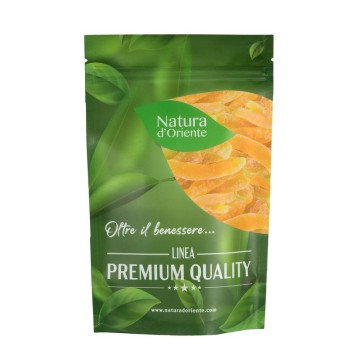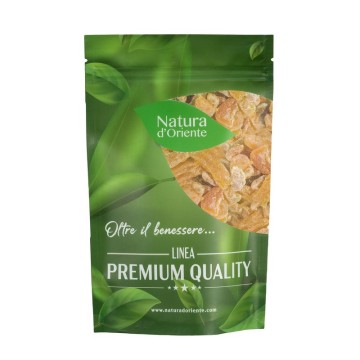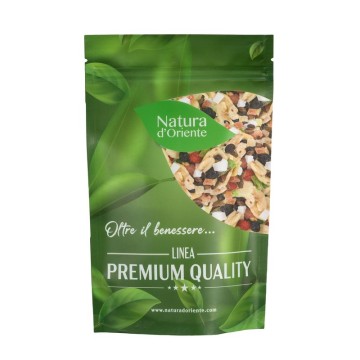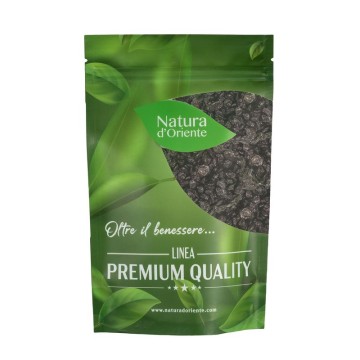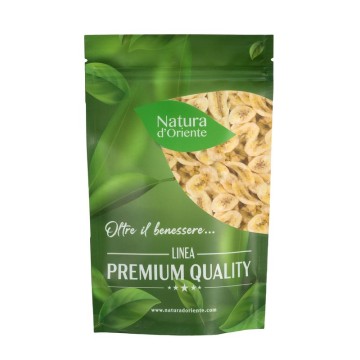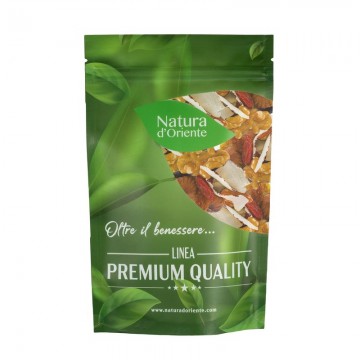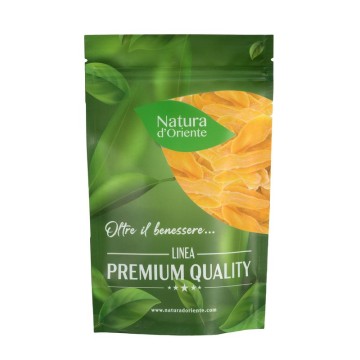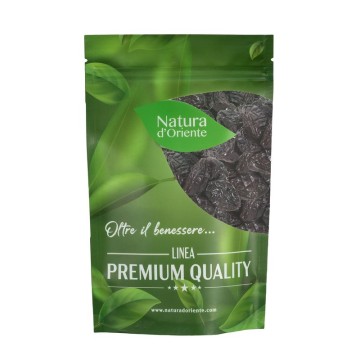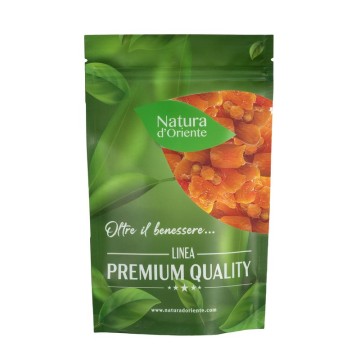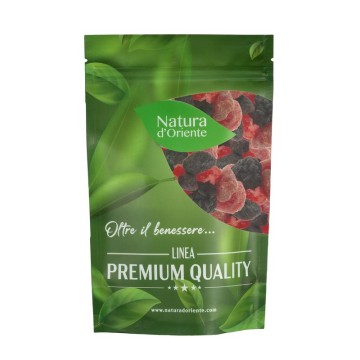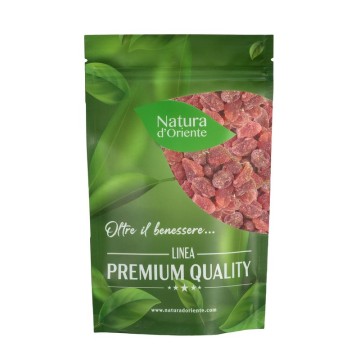Dehydrated dried figs
These fruits have been known since ancient times for their delicacy but also for their great nutritional and energetic qualities. Including dried figs in your diet helps the well-being of the body and the presence of insoluble fiber, beneficial for our intestine.
Dried figs: properties and benefits
Figs are one of the healthiest fruits available, commonly known for the well-being they bring to those with digestive problems, and for the sugary goodness of their taste. In the version of dehydrated figs, once the water is removed, the nutrients remain active and concentrated, making these seasonal fruits easy to keep. They contain many essential nutrients and minerals, which can help our body and even the little ones, in growth.
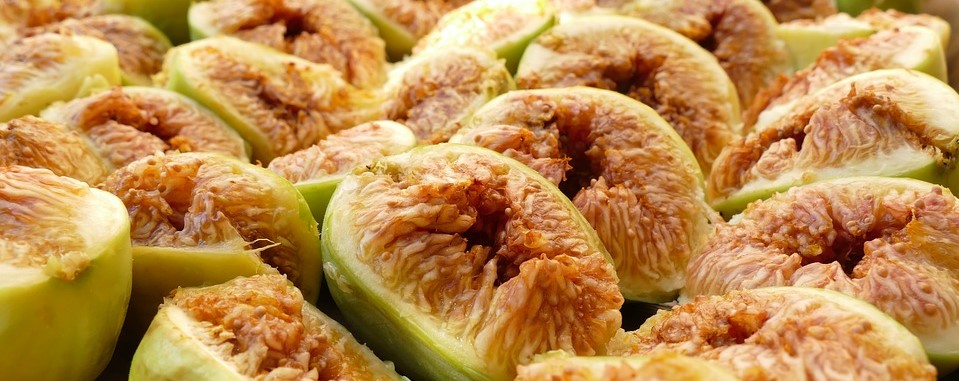
They bring a great energy charge, since dried figs contain different sugars, a good amount of calcium (also useful for the well-being of the bones), and iron. In terms of calcium, a portion of dehydrated figs can provide a good percentage of the daily ration.
The fiber contained in dried figs is divided equally between soluble and insoluble fiber, and in particular the insoluble fiber is useful for preventing constipation, facilitating intestinal transit. It binds to water, decreases the pressure in the colon and reduces the time of intestinal work. The soluble fiber, on the other hand, expands in the stomach both with satiating effects and by binding to the cholesterol particles, it also becomes a support to be able to expel them. In addition, figs are known to relieve gastric ailments in a natural way
Dried figs are also known to be a good source of copper, a useful element for our health as it supports many enzymatic reactions in the body, it is beneficial for connective tissues, those of the hair and eyes. Furthermore, it is one of the substances that promote the formation of antioxidants in our cells.
Another antioxidant salt contained in dried figs is manganese, and the presence of potassium is good, another useful component for the well-being of the heart muscles and nerve cells, as well as to counteract the effects of excessive sweating, in sports or with high temperatures. Potassium is useful together with sodium, to regulate the body's hydro-saline and acid-base balance. Sodium in the body, often found in large quantities in packaged foods, and a potassium-rich diet can help can help prevent imbalances that can sometimes lead to blood pressure.
Another recognized benefit of dried figs is the high concentration of iron, which carries oxygen in the blood - we know that iron deficiencies cause fatigue and weakness. Furthermore, on a nutritional and dietary level, dehydrated figs contain very little fat and have a low calorie content, compared to other types of dried fruit. Their satiating properties can also help you with weight loss diets - they are perfect for a nutritious and not excessively caloric snack.
Origins and History of cultivation
The fig is one of the oldest plants cultivated by man, already present eleven thousand years ago in the Fertile Crescent area, although it probably comes from Asia. Famous are the descriptions in the Old Testament in which the fig, together with the vine, was a symbol of fertility and joy. Figs in classical Greece were considered prized food, for orators and philosophers, and it seems that the philosopher Plato was very fond of dried figs. Indeed, according to a popular legend, if a child suffered from stuttering, it was useful to take him under a fig tree to facilitate him with words.
Fruits were considered aphrodisiacs, and the tree was sacred to Priapus, the god of fertility. In fact, it seems that figs, dried or fresh, were consumed before a love encounter. The term “sykon” (fig) was used to indicate the female genitals, probably also due to the shape of the fruit when divided in two. The numerous seeds inside the fruit were interpreted as its attitude to favor fertility. For this reason, a folk medicine legend indicated how a sterile couple who wanted children could remove two leaves from the fig tree and place them under the pillows, during the nights of the waxing moon. Today there are hundreds of varieties of the fig, which is still appreciated and cultivated in many countries; we often find on the market figs from Turkey, figs from Greece or Italian figs. In our country, crops are widespread especially in Campania, Puglia and Calabria, but they are still present in all regions. The most common variety also among Italian figs is Ficus carica, with many sizes and colors of fruits, with yellow to black, brown or purple skin.
Plant and Fruit
The common fig plant (Ficus carica) is a short-stemmed plant, which can reach heights of about 7-10 meters, with large, lobed leaves. Figs usually thrive in areas with long, hot summers, although they can also be grown in colder areas if they are properly insulated from freezing temperatures. Common fig flowers do not require pollination to produce figs, the fruits that can be eaten fresh from the tree, stored as dehydrated figs, or used in cooking. Figs are generally harvested when fully ripe. As a fruit, the fig is actually a fleshy infructescence, rich in sugar and can have a variable color. There are white figs, figs with green to yellow skin, black figs with red to brown skin, up to dark purple.
Some varieties of figs from Greece, Turkey or Italian figs are suitable for fresh consumption, others for drying. Inside the infructescence are enclosed the unisexual flowers, very small, and the real fruits that develop inside are the numerous small achenes, the small seeds that we see. These are surrounded by a succulent and sugary pulp, which is the tastiest and most edible part, and which in dried figs is maintained by eliminating excess water.
Nutritional values of dehydrated figs
Among the dehydrated fruit, figs have excellent nutritional properties, thanks to the presence of not excessive sugars (about 47%), numerous proteins (3.3%), mineral salts and vitamins, low fat (0.93%) soluble and insoluble fibers (around 10%) and a caloric intake not high compared to dried fruit, about 250 Kcal.
In dehydrated figs the values of vitamin A (10 IU), vitamin C (1.2 mg), vitamin E (0.35%) and many of the B group such as vitamin B1 or Thiamine (0.085) are good mg), vitamin B2 or Riboflavin (0.082 mg or 5.1% of the RDA), and vitamin B5 (about 0.4 mg or 7% of the RDA). In particular, the dose of vitamin K in dried figs (15.6 µg) corresponds to about 22% of the RDA. In terms of mineral salts, dried figs make essential micro-nutrients available such as calcium (162 mg), potassium (680 mg) sodium (10 mg), magnesium (68 mg), phosphorus, boron, iron (about 2 mg) , copper (0.287 mg), zinc, manganese (0.51 mg) and selenium.
How to consume dried figs in the kitchen or as a snack
These fruits, rich in sugar, minerals and vitamins, are easily digestible, can be eaten fresh or dried, included in sweet or savory recipes (appetizers). The dried version of figs is often used as a break-hunger or energy snack, thanks to the presence of sugars and mineral salts. Dried figs can be used to create dessert recipes, inserted into yogurt, smoothies, fruit salads, ice creams, dried fruit mixes. In addition, dehydrated figs can be part of the preparations for energy bars dedicated to athletes.
Dehydrated figs: side effects and contraindications
There are no particular contraindications to the intake of dehydrated fruit such as dried figs, but certainly we must keep in mind a possible intolerance to the food. Furthermore, the correct quantities of fruit should not be exceeded, otherwise there is a risk of a laxative effect and abdominal pain. A contraindication of dehydrated figs concerns people who are obese or who suffer from diabetes. The presence of numerous sugars, which can increase blood sugar levels - even in the case of diabetes from pregnancy or breastfeeding.





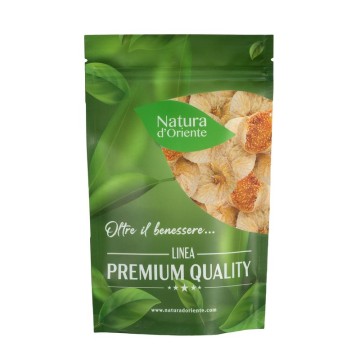



 No reward points for this product.
No reward points for this product.


